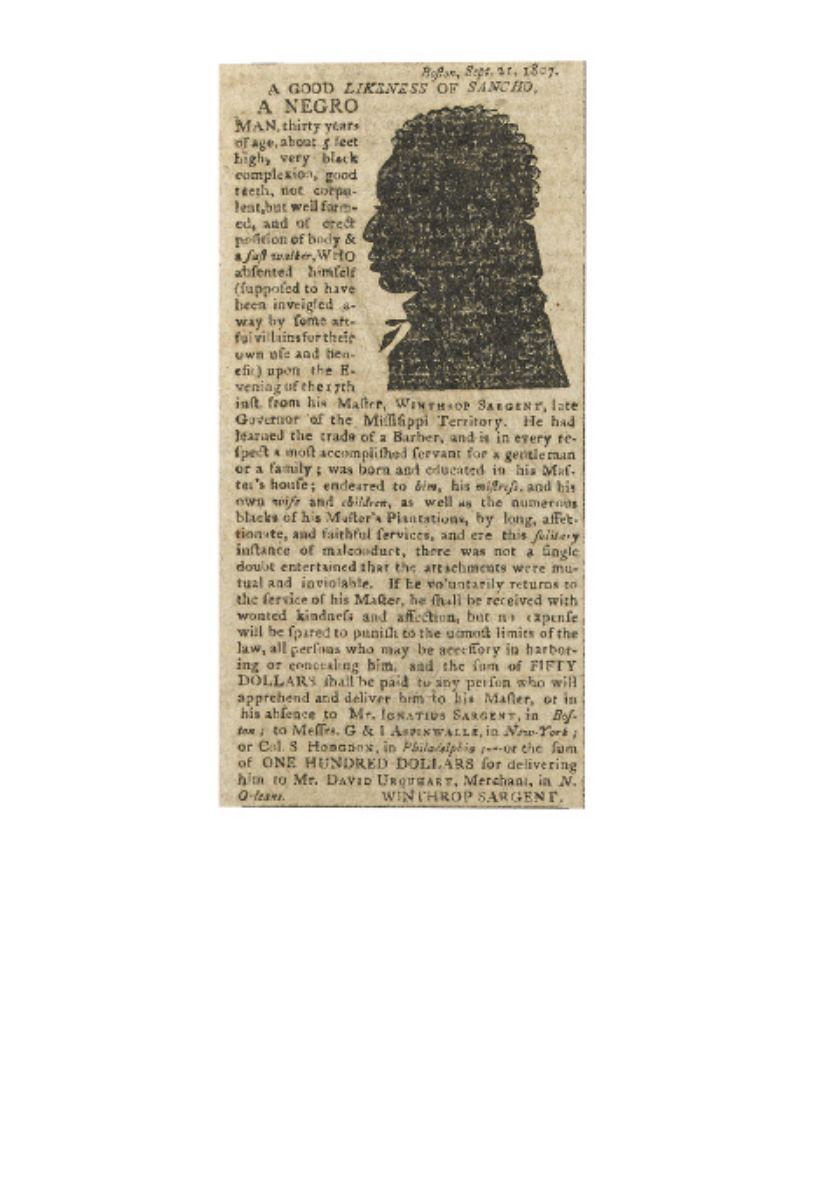

27
●
SARGENT, WINTHROP.
A Good Likeness of Sancho, a Negro.
A woodcut
(2 x 1
1
⁄
2
inches) with a five-inch description in an advertisement for a runaway slave,
appearing in the Columbian Sentinel. Four pages folio, removed from a larger volume.
Boston, 7 October, 1807
[800/1,200]
The owner of Sancho, the runaway slave in this rather elaborate newspaper advertisement was Winthrop
Sargent (1753-1820), American patriot and officer in the Revolution, politician, writer, member of the
Federalist Party and Governor of the Mississippi Territory.What makes this advertisement so extraordinary
is Sargent’s belief that perhaps Sancho might have been carried off and not run away at all. Sargent is effu-
sive in his statement of affection for Sancho on behalf of the entire family, as well as the other servants. “He
had learned the trade of a barber and is in every respect a most accomplished servant for a gentleman or fam-
ily; was born and educated in his master’s house; endeared to him and his mistress and his own wife and
children, as well as the numerous blacks of his Master’s Plantation, by long affectionate and faithful service.”
He adds that if Sancho did run away, and voluntarily came home, he would be welcomed with open arms
and no punishment. However, if he did indeed flee, Sargent is offering $50 to the person who returns him—
and “no expense will be spared to punish those who might be harboring him.”










